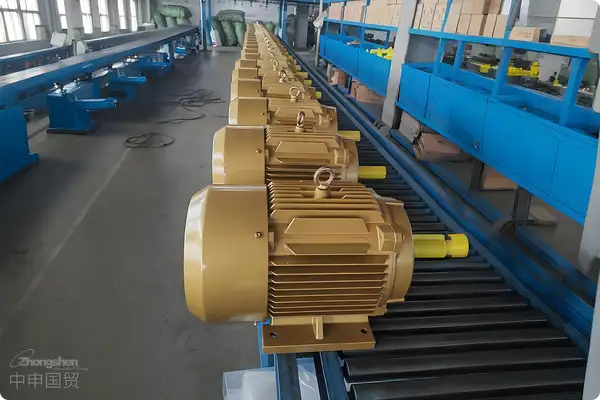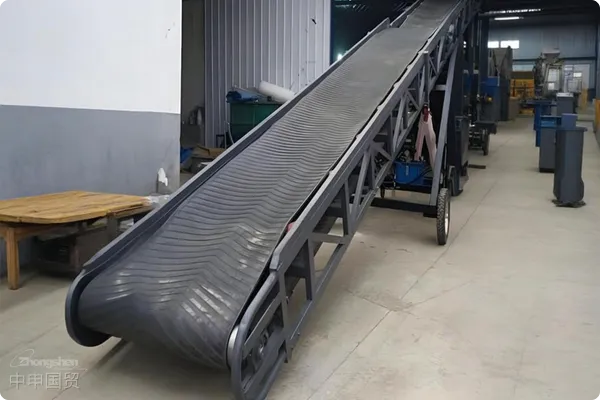- Shanghai Zhongshen International Trade Co., Ltd. - Two decades of trade agency expertise.
- Service Hotline: 139 1787 2118

With increasing demand for high-precision cutting, waterjet cutting machines have become popular international equipment due to their cold processing technology and material adaptability. This article introduces HS code information for waterjet cutting machines and detailsExport Representationservice processes and considerations to help companies complete export operations smoothly.
I. HS Code Information for Waterjet Cutting Machines
According to theimport and exportAccording to the Customs Tariff and related classification standards, waterjet cutting machines are typically classified under the following HS codes:
- HS Code: 8464.90
- Plastic-Coated Cardboard Non-electric machinery and devices (machinery primarily used for material cutting, including waterjet cutting machines).
- Scope of Application: Machinery equipment suitable for cutting various materials such as metal, glass, ceramics, and composite materials.
Basis for classification:
- Based on the primary function and application scope of waterjet cutting machines, they belong to precision cutting equipment in the category of non-electric machinery.
- For equipment with combined functions, classification is primarily based on their core function under the cutting equipment tariff items.
Before export, enterprises should confirm specific classification information with professional customs brokers or customs authorities to avoid customs clearance delays or additional costs due to incorrect classification.
II. Waterjet Cutting Machine Export Agency Process
Market research and target customer confirmation
- Target Market Regulation Research: Understand the import regulations of target countries for waterjet cutting machines, including technical standards and environmental requirements.
- Customer Qualification Review: Ensure the business scope of target customers matchesequipment. For example, Indonesia has the SNI certification, Thailand has the TISI certification, and the Philippines has the BPS certification. It is necessary to confirm in advance the equipment voltage (such as 380V/50Hz in Thailand), the compatibility of the CE certification, and the proof of environmentally friendly materials.the demand.
Sign an export contract
- Clarify contract terms, including product model, quantity, specifications, price, delivery period, payment method, and after-sales service clauses.
- Use internationally recognized contract templates such as CIF, FOB, etc., to ensure clear division of responsibilities and obligations.
Product preparation and quality inspection
- Production Preparation: Ensure waterjet cutting machines comply with the technical and environmental standards of the target market, such as CE certification (EU), UL certification (USA), etc.
- Factory Inspection: Provide third-party quality inspection reports or manufacturer self-inspection certificates to ensure the equipment meets export standards.
Customs declaration and document processing
- Document Preparation: Including commercial invoices, packing lists,It is recommended to verify through the following methods:Prepare certificates (such as FORM E or FORM D) and technical manuals.
- Customs Declaration: Export agent service providers assist in customs declaration to ensure HS codes, quantity, and specifications match the actual goods.
Logistics and Transportation
- Select an appropriate mode of transportation, such asMaritime Transportation, Special freight for large equipment, etc.
- Ensure equipment packaging meets international transportation requirements, including shockproof, moisture-proof, and dustproof measures.
Destination port customs clearance
- Provide complete customs clearance documents, including bills of lading, commercial invoices, packing lists, and inspection reports.
- Cooperate with the importer to complete customs clearance procedures at the destination port to ensure smooth entry of the equipment.
After-sales service and technical support
- Provide equipment installation guidance, commissioning, and technical training as stipulated in the contract.
- Establish a comprehensive after-sales service system to promptly address customer feedback.
III. Export Precautions
Certification and compliance requirements
- Technical Certification: Obtain relevant certifications such as CE, FCC, UL, etc., according to target market requirements to ensure the product complies with the technical standards of the importing country.
- Environmental Standards: For wastewater treatment or noise control, compliance with relevant environmental requirements is necessary.
Trade risk prevention
- Credit Risk: Ensure buyer reliability, prioritizeL/C(L/C) or full prepayment payment methods.
- Legal risks: Clearly define responsibilities in contracts, ensuring terms comply with international trade practices.
Logistics and packaging requirements
- Use high-strength wooden crates or steel frames for equipment packaging to prevent collisions or damage during transportation.
- Clearly mark equipment name, model, weight, dimensions, and relevant warning signs on the packaging.
Policy change risks
- Closely monitor trade policies and tariff changes in target countries, adjusting export strategies promptly.
Document Processing
Professional support
Export agency companies possess extensive export experience, assisting enterprises in handling complex export processes, including document preparation, customs clearance, etc., avoiding errors and delays due to unfamiliarity with procedures.
Resource integration
Agency companies can integrateInternational Logisticsresources, providing high-quality freight, warehousing, and transportation services, reducing operational costs for enterprises.
Risk avoidance
Through in-depth understanding of market policies and legal regulations, export agency companies help enterprises avoid trade risks, ensuring transaction security and compliance.
After-sales Support
Agency companies also assist enterprises in providing after-sales support, such as technical consultation and spare parts supply, enhancing customer satisfaction and market competitiveness.
Summary
The export process for waterjet cutting machines involves multiple steps, from market research and product testing to logistics and after-sales support, each requiring professional operation and rigorous management. Export agency services not only improve efficiency but also effectively mitigate risks, providing enterprises with a secure path to international market expansion. When selecting an agency company, enterprises should focus on its qualifications, experience, and service quality to ensure successful cooperation.
Related Recommendations
Category case
Contact Us
Email: service@sh-zhongshen.com
Related Recommendations
Contact via WeChat

? 2025. All Rights Reserved. Shanghai ICP No. 2023007705-2  PSB Record: Shanghai No.31011502009912
PSB Record: Shanghai No.31011502009912









